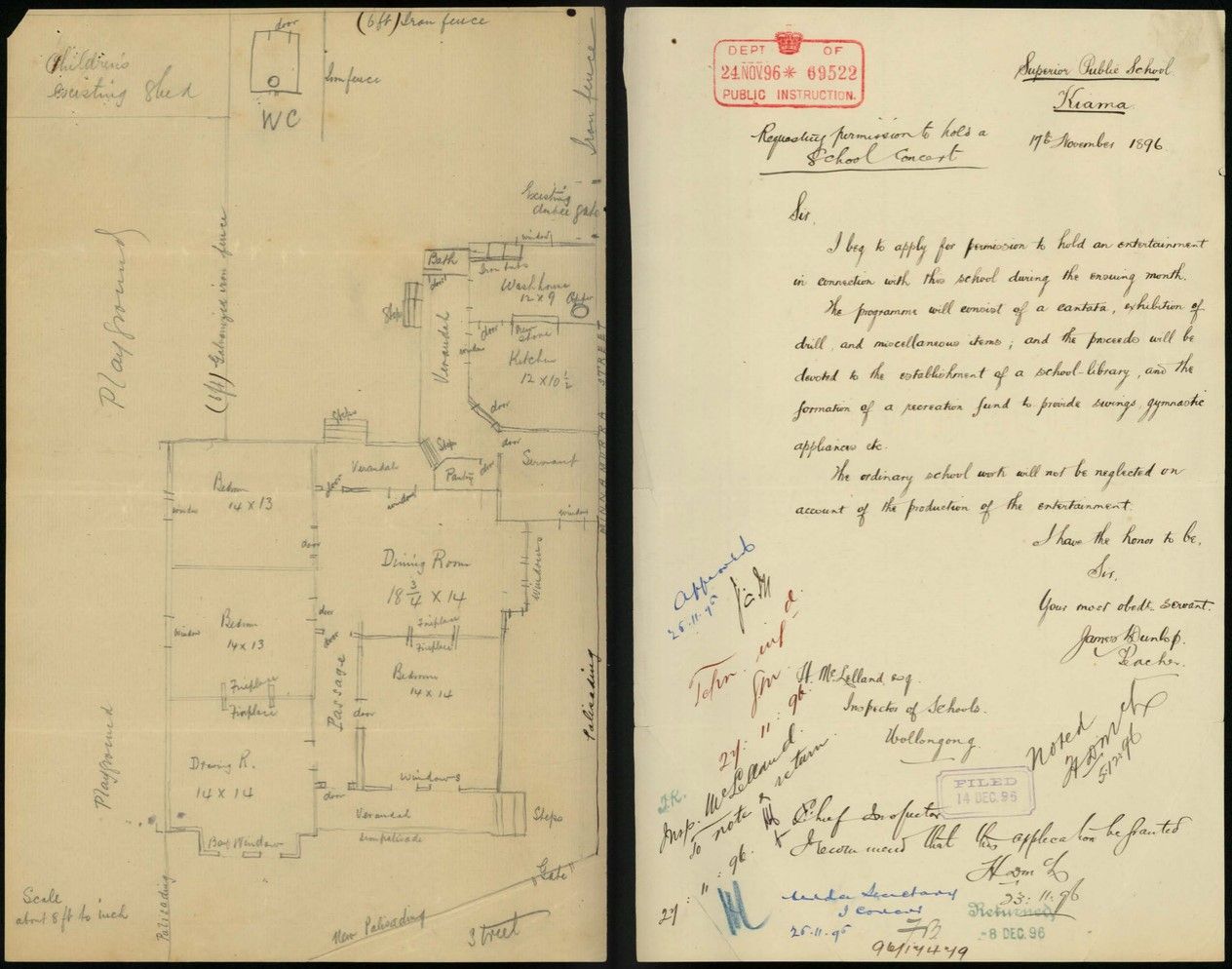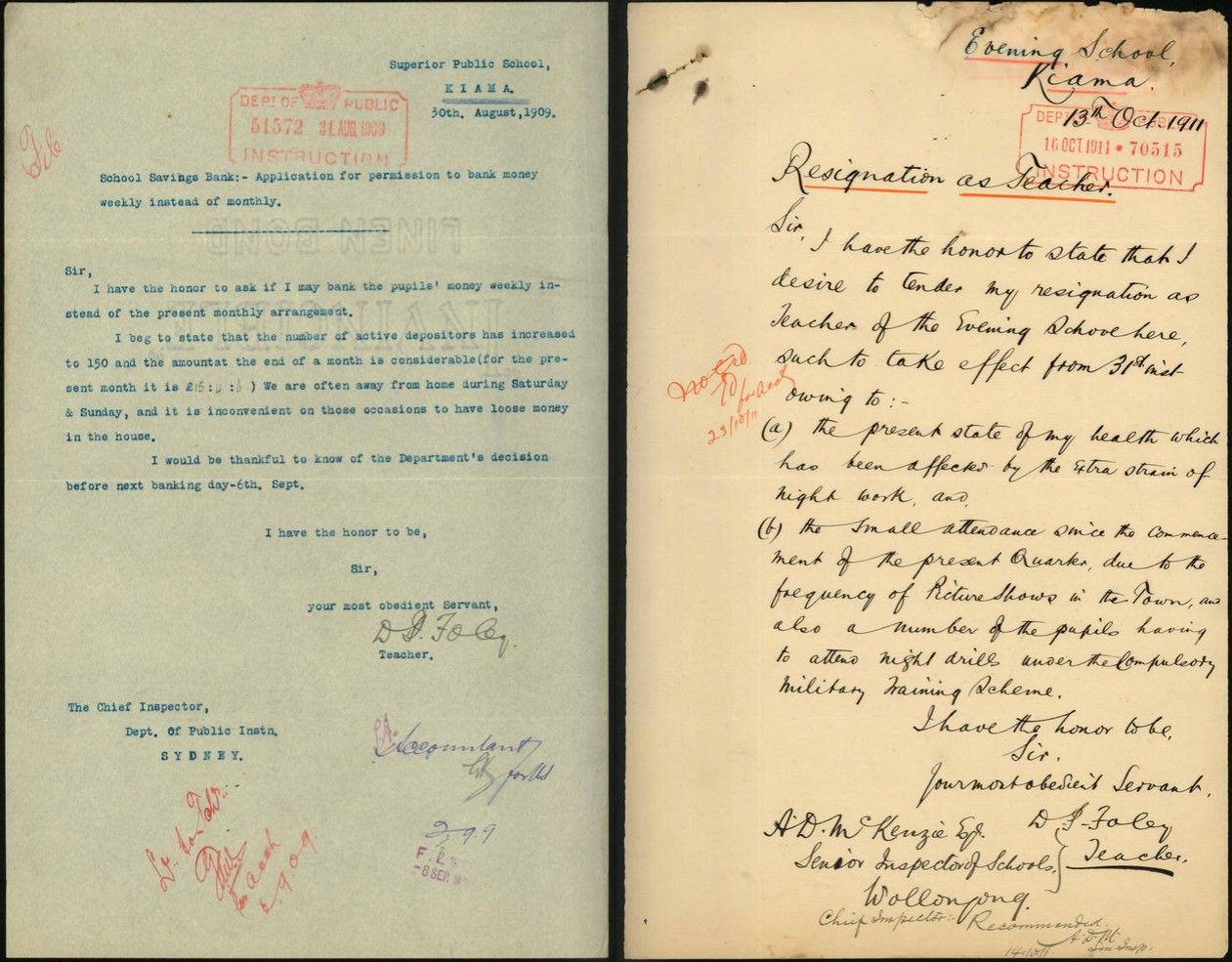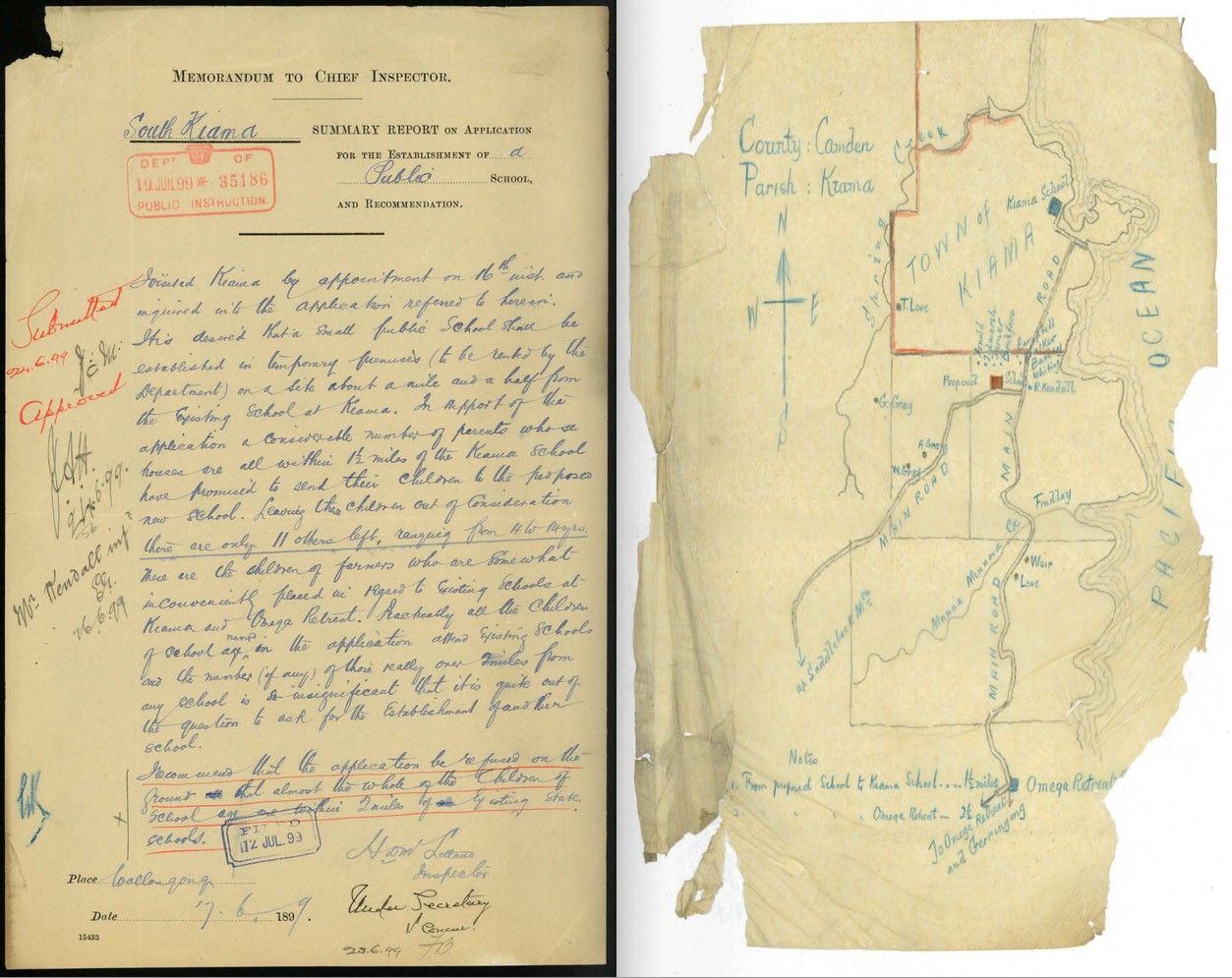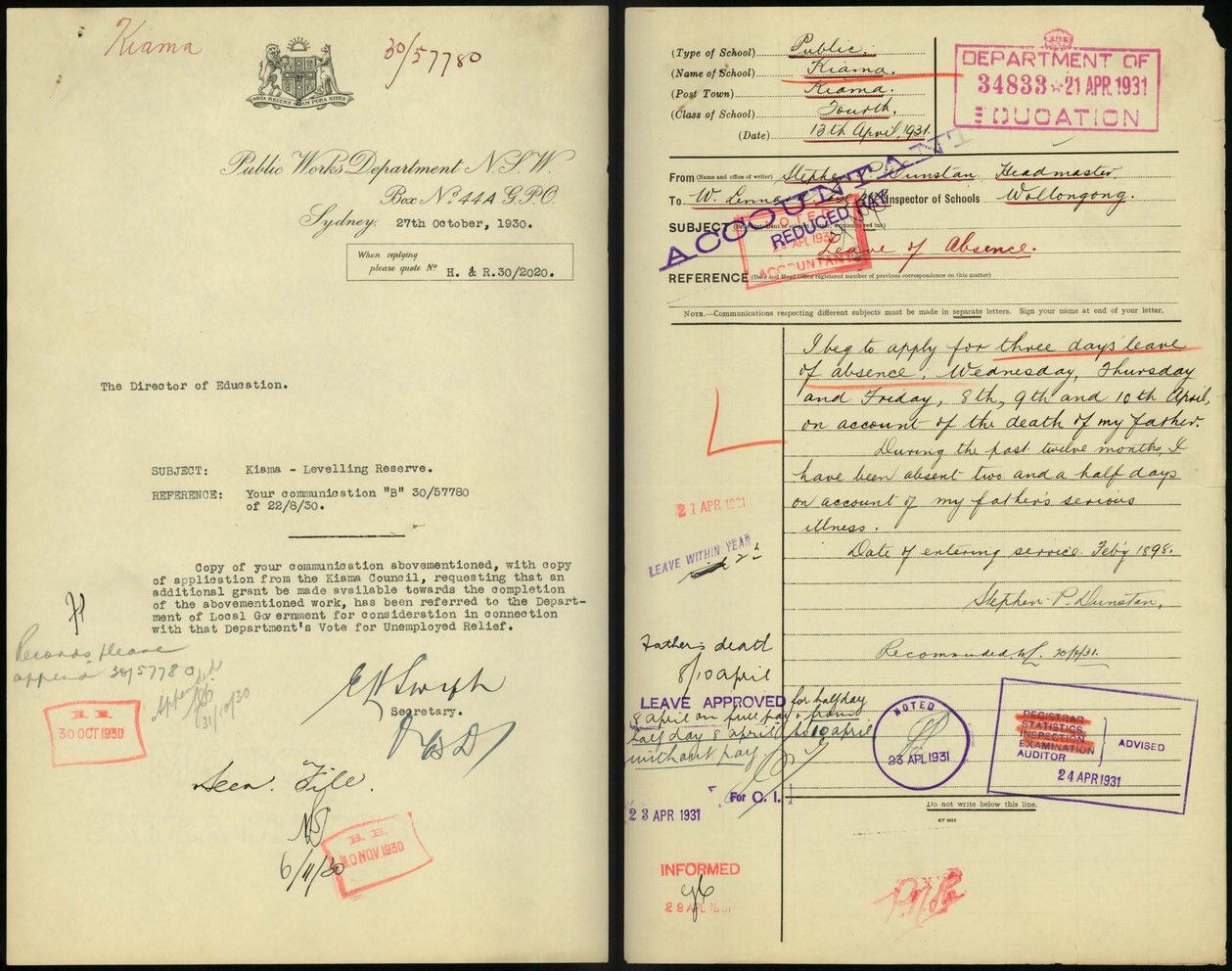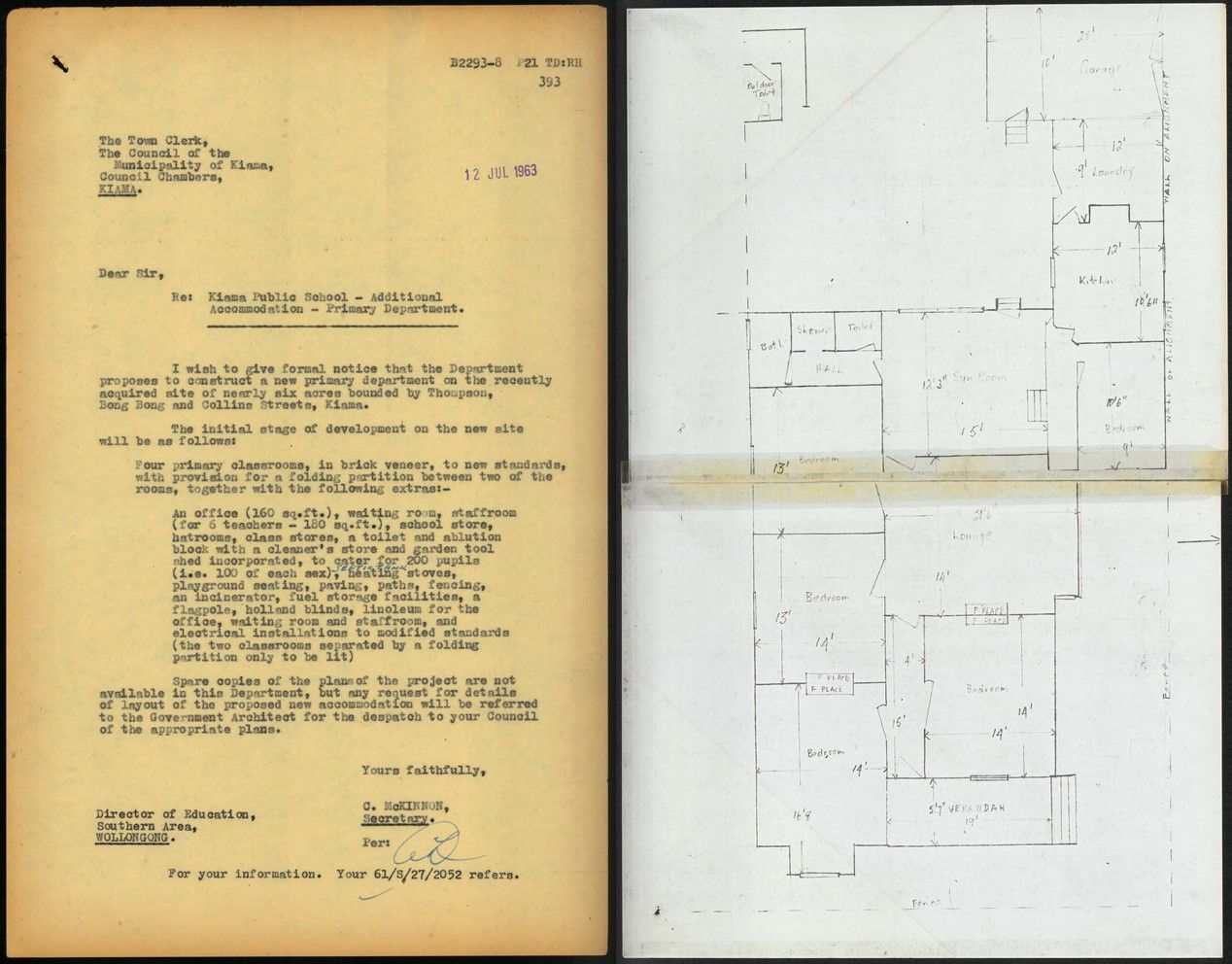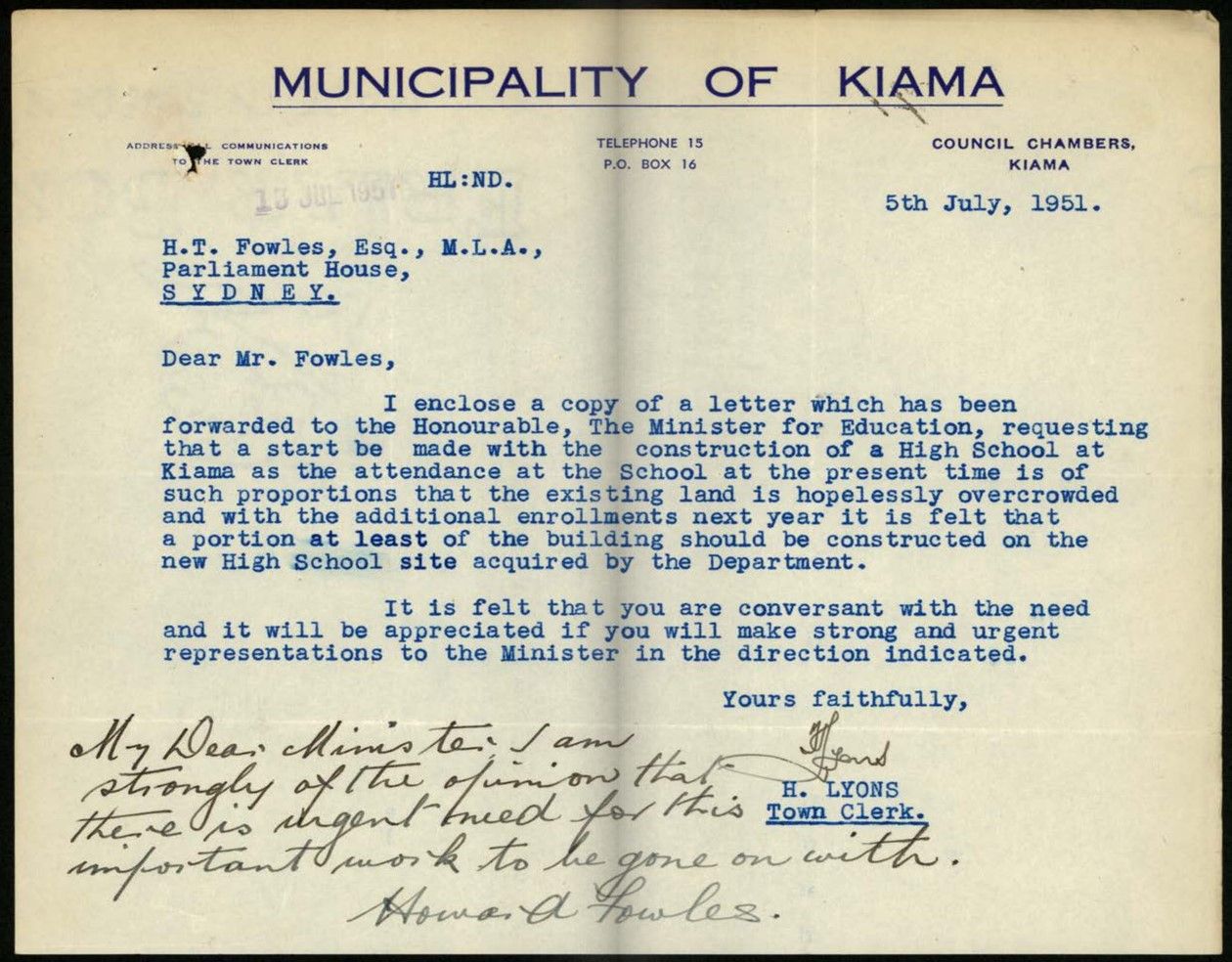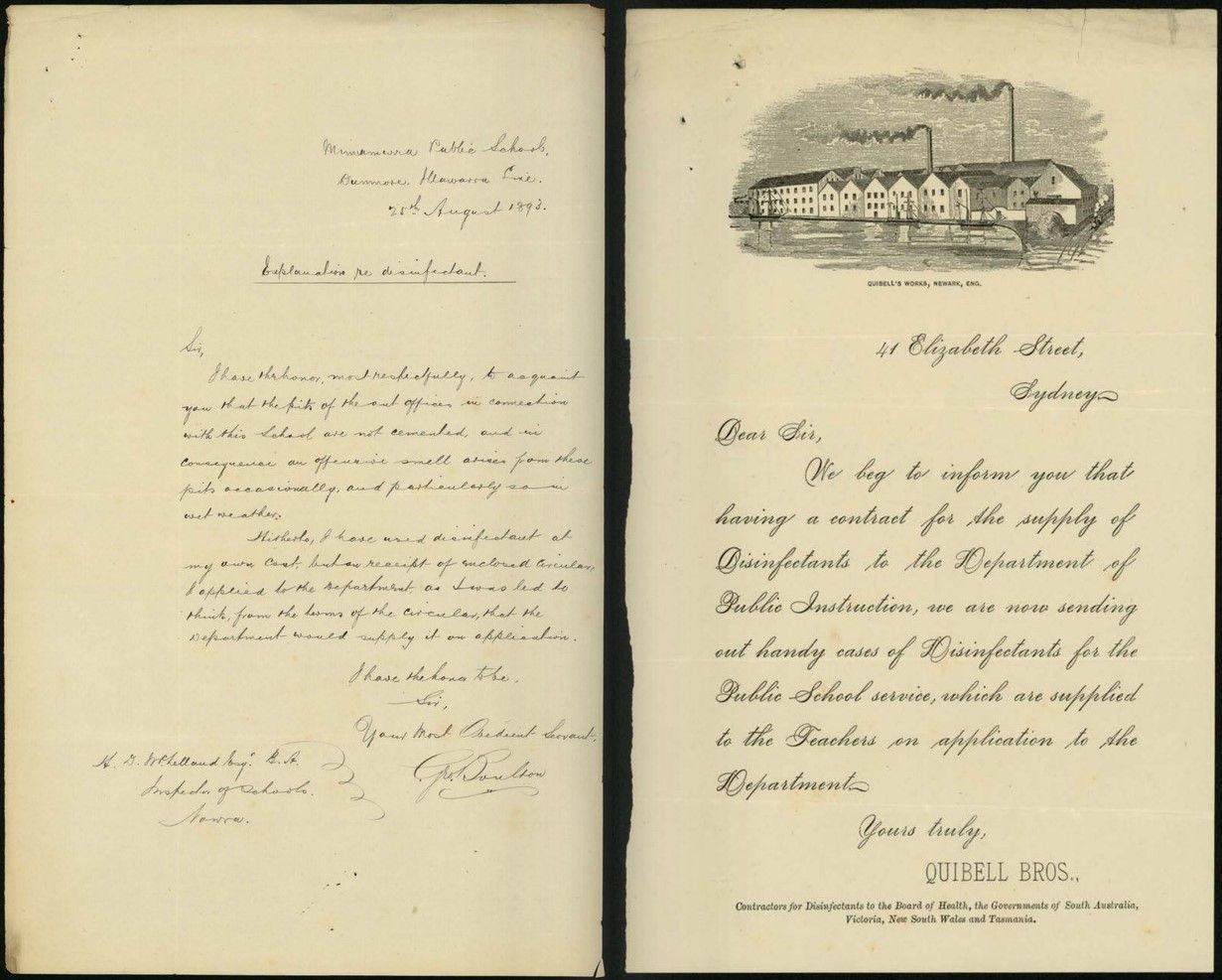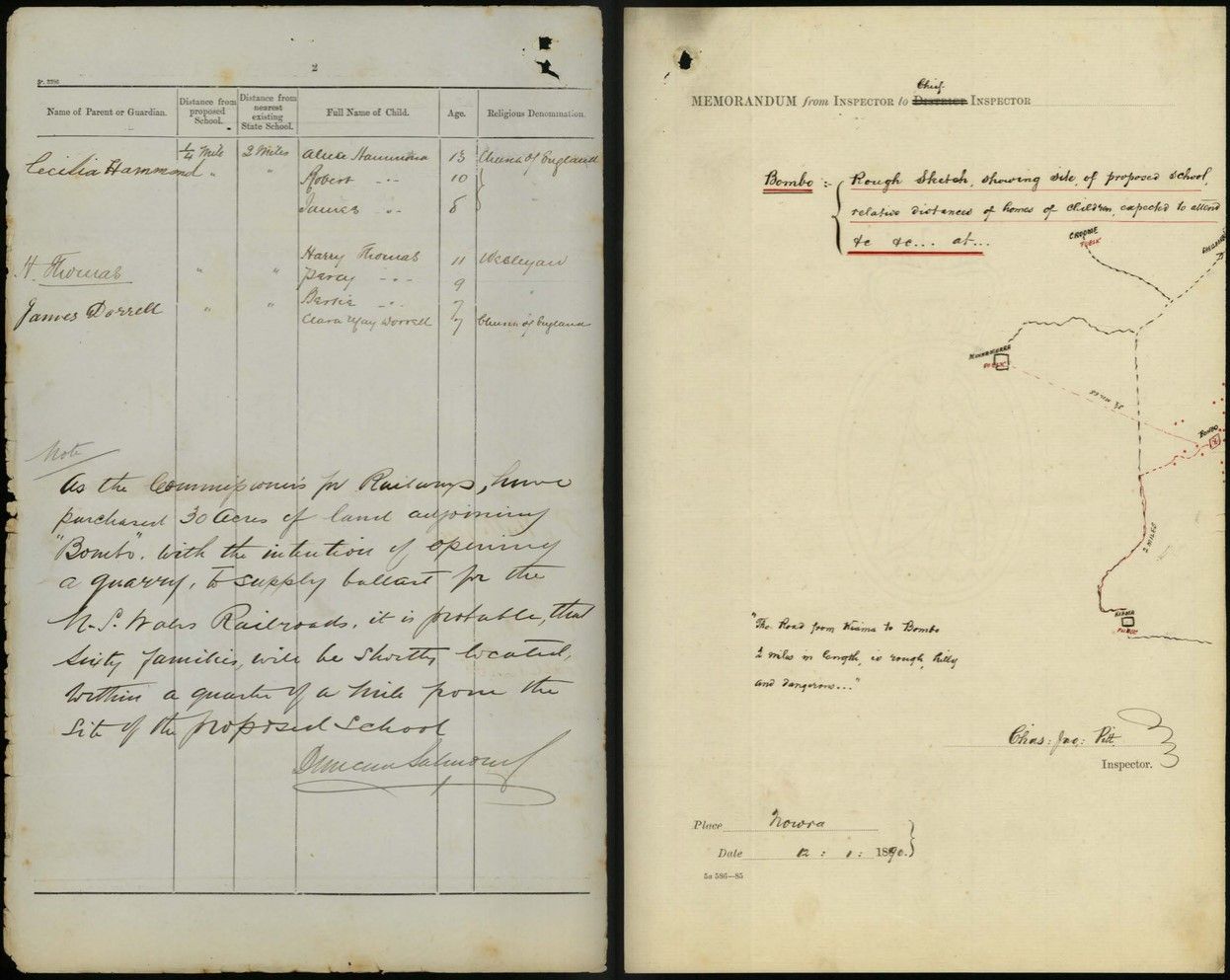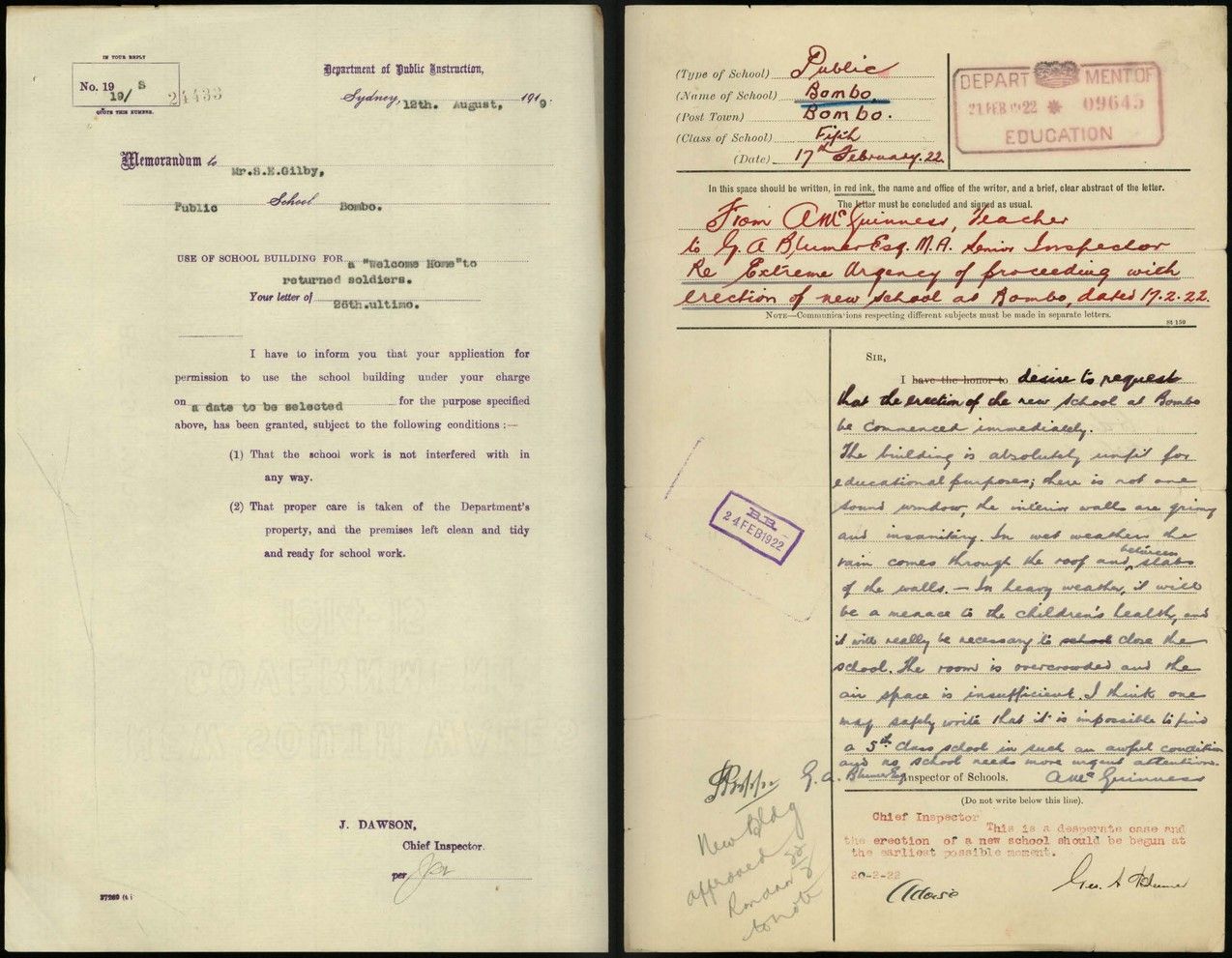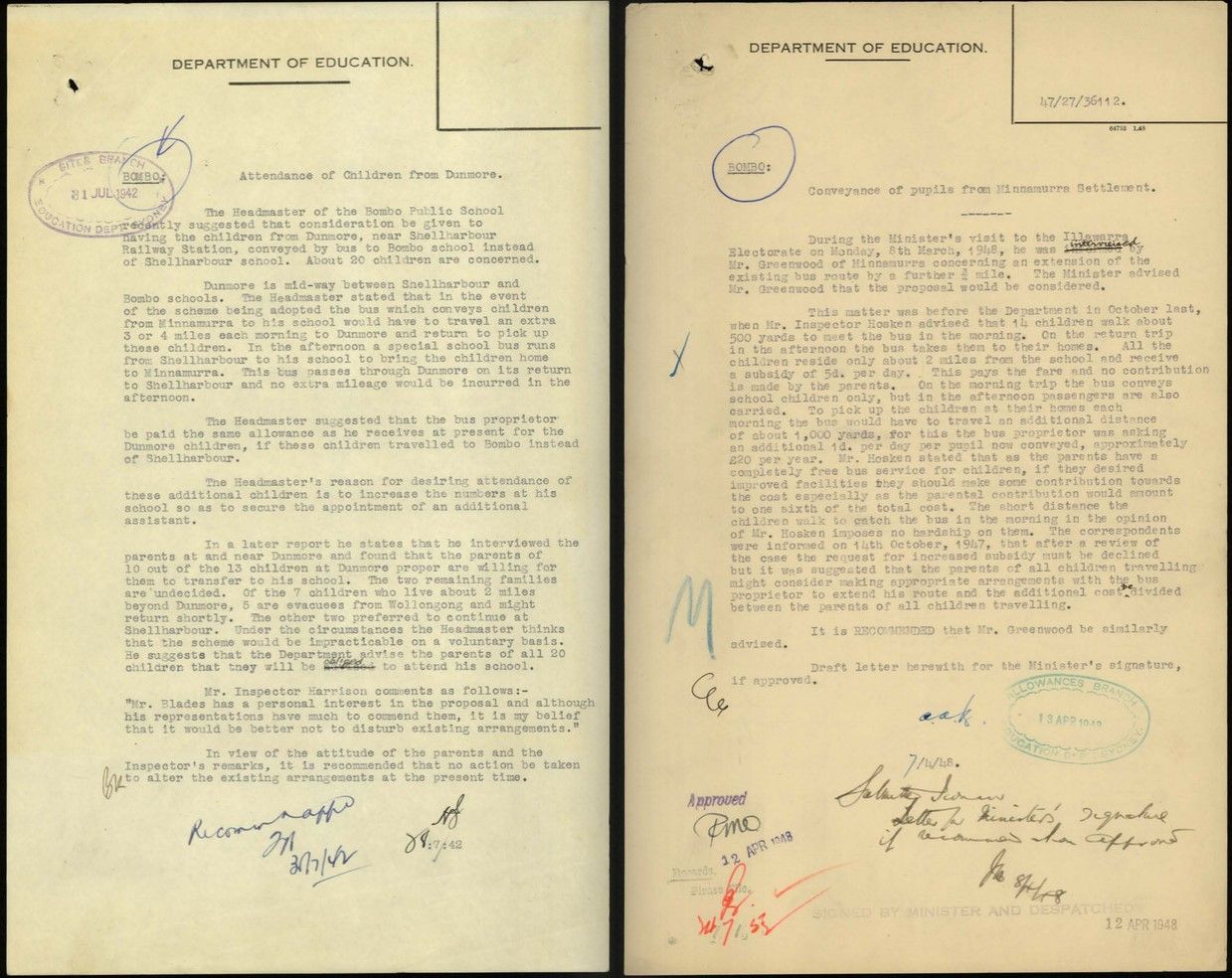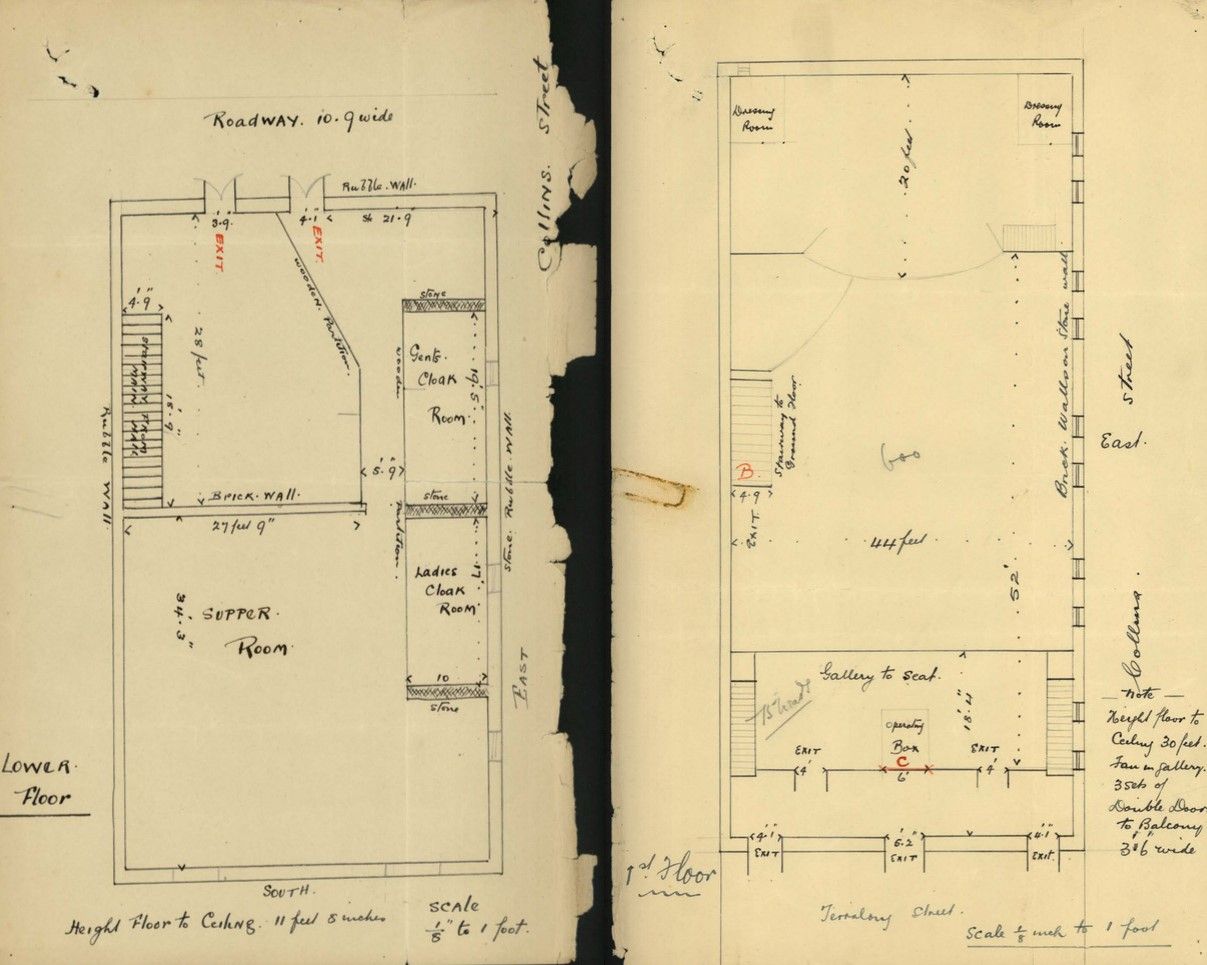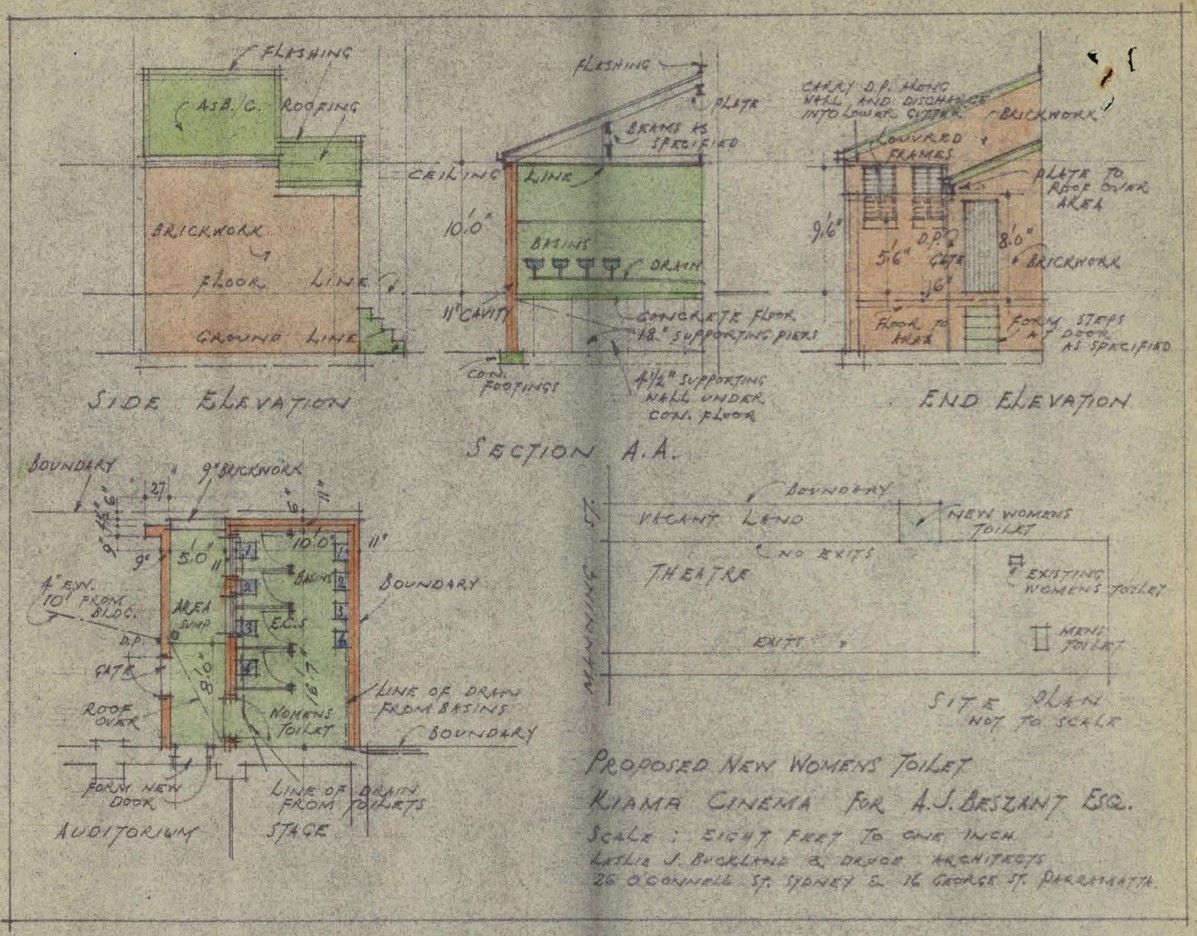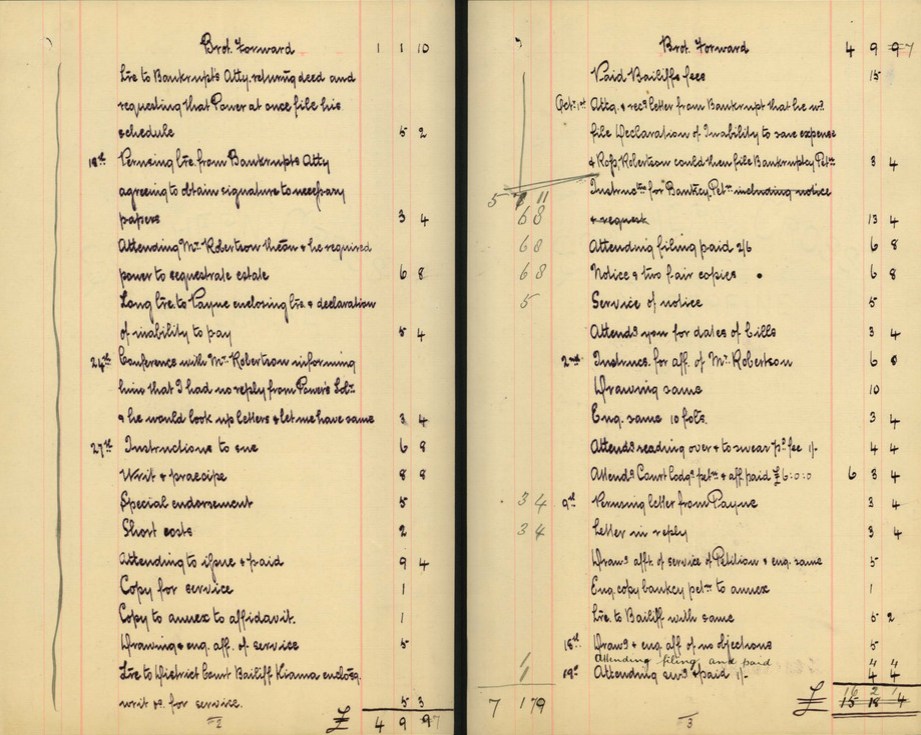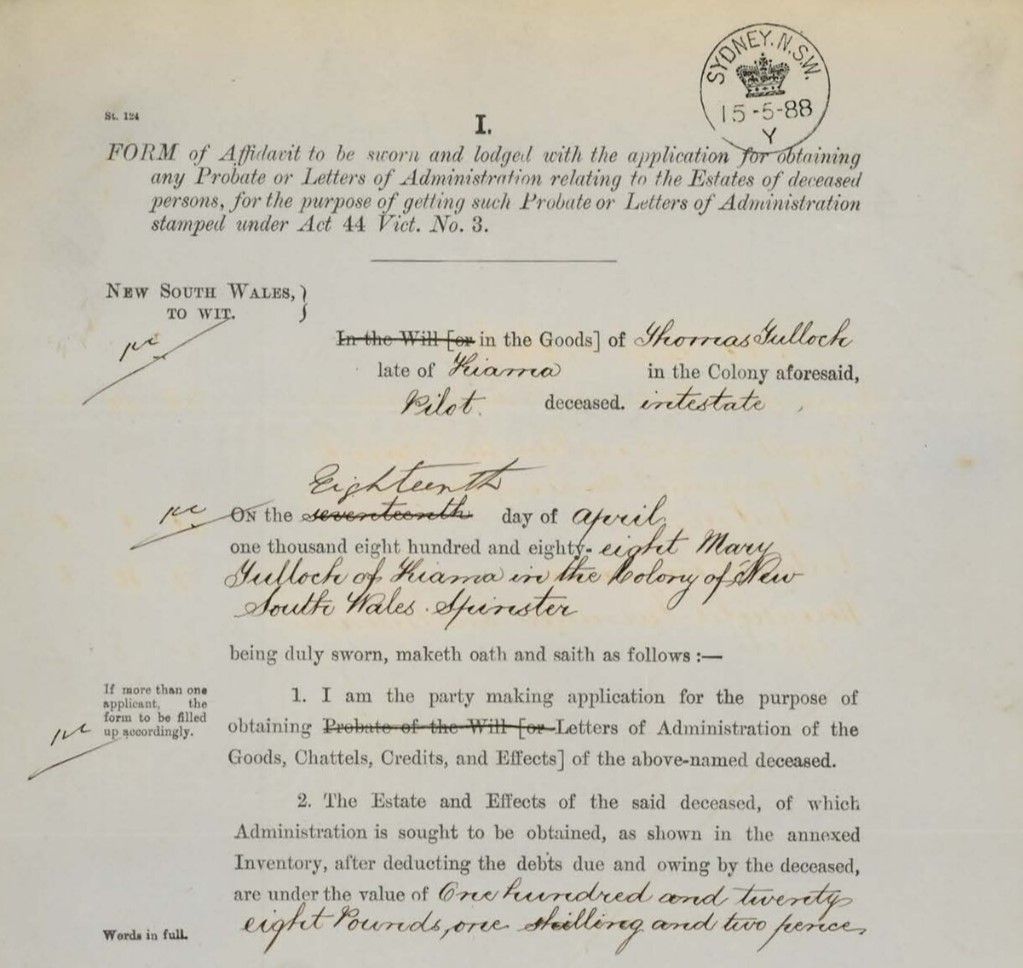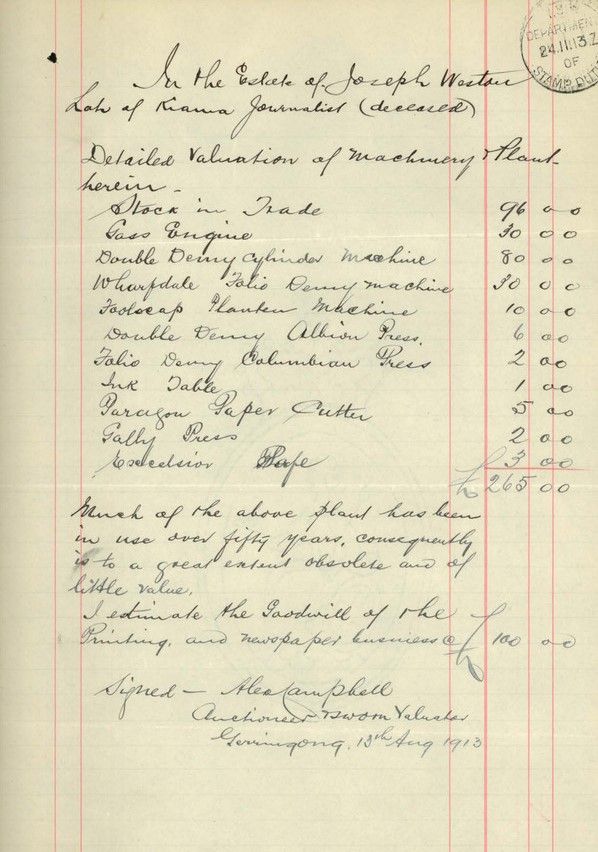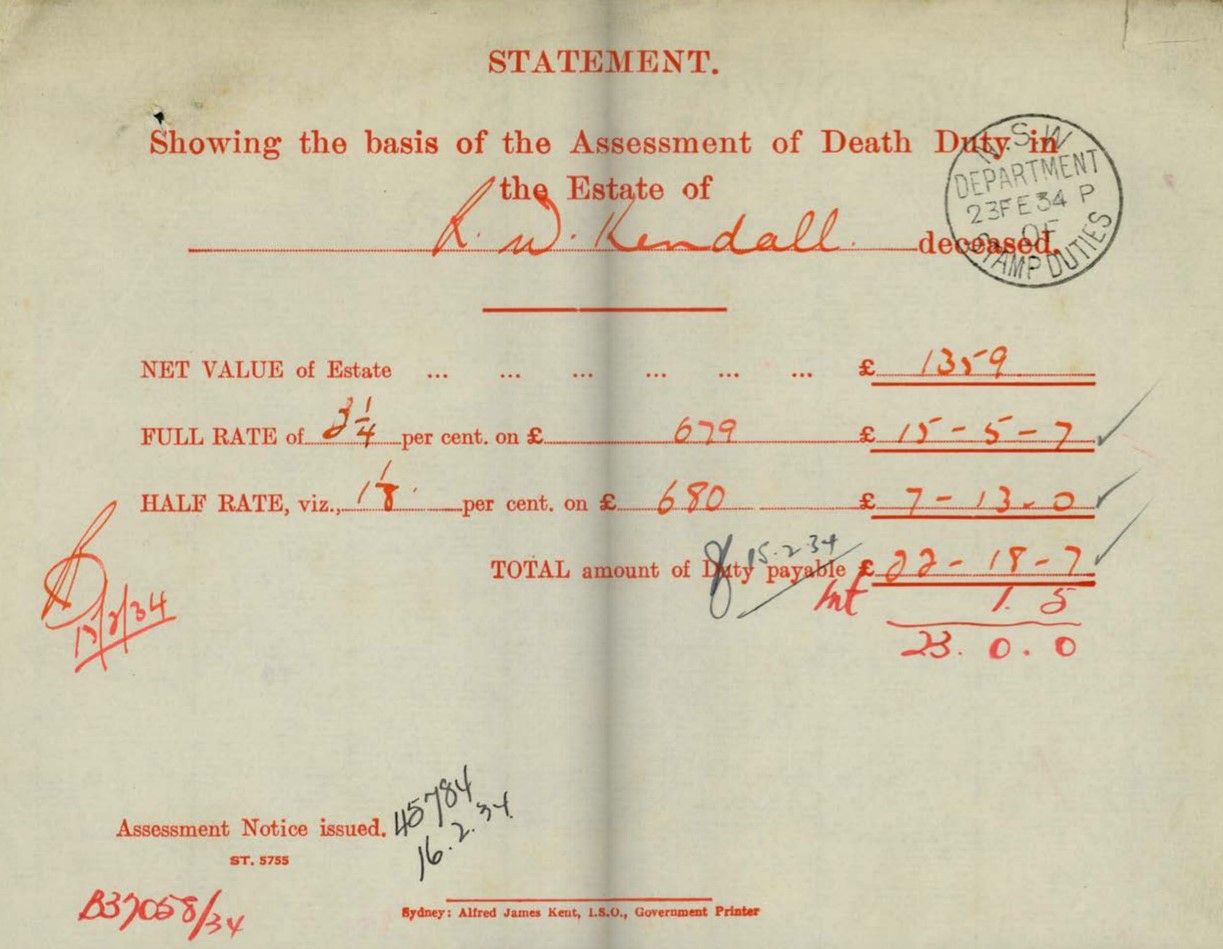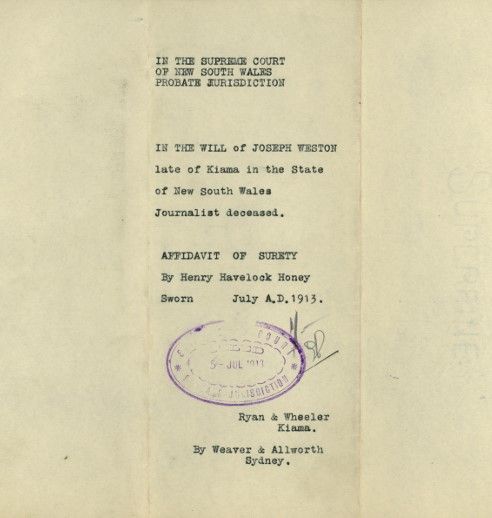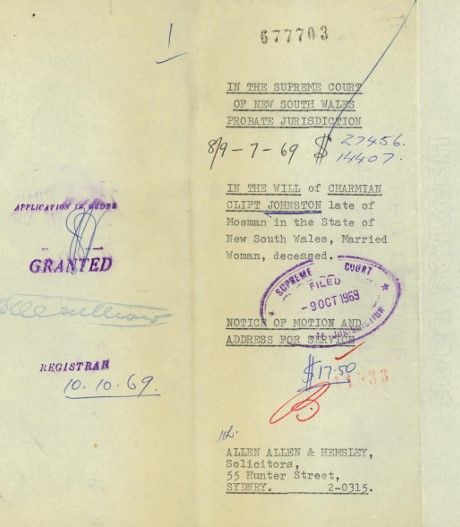Kiama
Archives in your town – a virtual tour
Explore the NSW town of Kiama through records in the State Archives Collection
As part of our Archives on Tour initiative we conducted a virtual tour of some of the archives that highlight key moments and people from Kiama's past. Take a tour of some of the featured archives below.
Watch the recording of the virtual event and come behind the scenes
School Files, 1876-1979
[NRS-3829]
What can these records tell you about your town?
There are similarities between all of the school files through content and purpose. They reflect their times. The files cover both wars but particularly reflect the many impacts of World War 1. Women resign or are terminated when they marry as married women were barred from public sector employment. Schools very strongly reflect the growth or decline of towns.
Kiama School files
The School files show the growth of the government school system from 1876 with both Kiama and Minnamurra commencing before these files start. While Kiama Public School continued on, smaller schools outside Kiama were established, changed names, changed type of school, prospered and over time closed as communities changed and transport improved. Kiama Public School offered post-primary schooling between 1890 and 1916 and then secondary schooling from 1944 until Kiama High School was established in 1954.
Repairs to school buildings and the teachers’ residences are constantly needed. The original site of Kiama Public School proved too small particularly after land was resumed for railway purposes.
Schools closed for teacher examinations, during severe storms and so the children could attend a special film matinee. They participated in Arbor Day activities; held school concerts; hosted the Minister of Education to open new buildings; are used as polling booths and as substitute halls to welcome home World War 1 soldiers and farewell departing residents among other school and town activities.
Teachers struggle to find accommodation where there is no residence or it’s used as part of the school so request forage allowance (for a horse) and reimbursement for accommodation costs; repeatedly request repairs and additions to the school residence; take leave for family emergencies, when ill and to march in Sydney on Anzac Day in 1938; propose altered school times to accommodate children helping with the milking; apply for expenses for moving between schools; request permission to hold swimming classes and manage the school without water during dry periods.
Parents and Citizens groups and local councils make representations in support of the schools in numerous matters – improved playground areas, for the Minister to open school buildings, for a new library to be named after a principal that died, for the school to be painted (and volunteered to do so), for permission to hold a Sports Fair to raise money and for improved access to secondary education.
Extracts from the files
Plans of public buildings
[NRS-4335]
The Colonial Architect started in 1832 and continued on as the Government Architect to the end of the 20th century. The public buildings serve a variety of purposes including Land Board offices; pilot stations and light houses in coastal areas; schools; hospitals; police stations; gaols; court houses; and even post offices from before postal services became a Federal Government responsibility. All of these buildings are often large and enduring even if their purpose changes over time.
Plans of Kiama buildings
Plans of schools are often included in the School files and in the Plans of public buildings. Kiama Public School has been changed many times. This plan is from 1921 for an eight-room building.
Kiama’s position on the coast influences the types of public works and buildings developed over time. Four plans show the Kiama Basin works from 1860, an undated plan of the Lighthouse Keeper’s residence and 1902 repairs and additions to the Pilot Station quarters.
Theatres and public halls files, 1895-1992
[NRS-15318]
Theatres and public halls had to be licensed from 1895. The licensing and regulations related to public safety. The theatres and public halls were owned by private individuals, businesses, religious organisations, community groups and councils and they were used for many purposes – dances; social gatherings; showing movies; live entertainment and skating (roller and ice). The files provide information about local businesses – both in relation to theatres and public halls and the construction industry. Theatres and public halls are a large part of recreation in any town. The rise and fall of these buildings chart changes in population and in the broader world of recreation.
The Oddfellows Hall, on the corner of Terralong and Collins Streets, was licensed in 1895. Michael Nesbit Hindmarsh was the licence holder. In 1904 it was gaslight and had capacity for 800 people. Sketch plans from 1925 show a supper room, cloakrooms, a gallery, stage and dressing rooms back stage although it was being used to show pictures. There was a list of requirements that needed work. By the 1940s Wollongong Theatres was operating the Oddfellows Hall along with six other theatres and were removing the stage to allow more room for dancing. In 1955 changes and repairs were needed and in 1956 it was let to a local organisation and ceased to function as a public hall. In 1959 it became the Group Seven League’s Club.
The Antrim or Kiama Picture Theatre fronting Manning Street was built in 1923 and licensed in 1924. A J Beszant leased the theatre in 1928. It was licenced to seat 983 people. A Police report in 1938 said pictures were shown four times a week and dances were held approximately once a month. There were various owners and licensees over time including Wollongong Theatres. In 1945 the theatre was licensed to accommodate 975 people and new facilities were required. The consent of the Ministry of Post-War Reconstruction and the Directorate of War Organisation of Industry had to be obtained. The Kiama Chamber of Commerce complained in 1955 about a lack of matinees for children, poor reception in rainy weather and uncomfortable seating.
Extracts from the files
Bankruptcy, 1888-1929
[NRS-13658]
Bankruptcy is a state in which a person is unable to pay creditors and is required to undergo a legal process that usually results in liquidation of his/her estate in order to meet expenses (at least in part). If a person is declared to be a bankrupt then he/she cannot operate a business for profit, enter a business contract or borrow money. It is similar, but not identical to insolvency.
There are Insolvency files from 1842 to 1887 and from 1930 bankruptcy became a Federal government matter.
Bankruptcy files contain lists of creditors that the bankrupt person owed money to and debtors that owed money to the bankrupt person. Through these lists they show commercial connections in a town, between towns and with Sydney. The bankrupt person provides a statement about why they became bankrupt often providing a picture of what is happening in the town and beyond. The files of bankrupt people in the town collectively show what sorts of businesses where operating.
Records of a Kiama Resident
David Power is described as a storekeeper and livery stable keeper in his Bankruptcy file. David Power describes himself as a labourer. He provided money for his wife to purchase goods for the store that she ran. Neither David Power or his wife kept books other than day book.
David Power attributed his bankruptcy to “not being able to procure work and to bad times”. He was in business for 4 years and most of the debts had been incurred in the previous 18 months. David Power owed over 829 pounds and had debts owed to him of 26 pounds. The sale of his assets raised over 56 pounds.
Deceased estate files, 1880-1958
[NRS-13340]
The Stamp Duties Office created a deceased estate file for every individual who died leaving property or other assets ('estates'), which were subject to death duties. The files contain the papers, correspondence and other documentation relating to the assessment of death duty by the Stamp Duties Office. They are a financial record of the person’s estate when they die and frequently have very detailed information about a person’s possessions.
There are Deceased estate files for people from all walks of life, men and women, all ages and financial positions.
Records of Kiama Residents
These Deceased estate files spanning nearly 50 years from the late 1880s to the mid 1930s are typical of people of their time and their roles. All also have Probate packets.
Thomas Tullock, a pilot in Kiama died in 1888 without leaving a will. Mary Tullock, his wife, signed the affidavit. Thomas Tullock had no real estate. His estate was worth over 128 pounds.
Joseph Weston, a journalist of Kiama, died in 1913. Joseph Weston was the owner of the newspaper the Kiama Independent. Two of his children signed the affidavit. There was disagreement over the value of the business. Joseph Weston’s estate was ultimately valued at nearly 1,700 pounds with 1,110 pounds of real estate in Kiama and 265 pounds of plant and goodwill in the business. There were over 260 pounds of debts. The death duty charged was 19 pounds 10 shillings and 3 pence.
Robert Wesley Kendall, an undertaker of Kiama, died in 1933 aged 63. The affidavit is signed by his widow and son. Robert Kendall’s estate was worth over 1,450 pounds. The majority of the estate was made up of the home on the Pacific Highway in Kiama (660 pounds) and money in the bank (over 550 pounds).
Extracts from the files
Probate packets, 1817-1976 and part 1989
[NRS-13660]
A grant of probate is the authority given by the Supreme Court of NSW to the executor(s) to deal with a deceased person's estate. Probate packets hold the last will and testament, codicils (additions or revocations to the will) or letters of administration.
Other documents include an inventory of assets of the estate; affidavits of death and papers produced by the executor.
Not everyone has a probate packet. Depending on the type, size and value of the assets located in New South Wales it may not be necessary to obtain a grant of probate in New South Wales. There is no statutory requirement to obtain probate in every case.
Records of Kiama Residents
These Probate packets spanning over 100 years from the 1860s to the 1960s are typical of people of their time and their roles while also being special because of who they are.
Michael Hindmarsh was a pioneering landholder and Justice of the Peace. In his detailed will of seven pages he divides his property and stock among his family. The Hindmarsh family was significant in the development of Kiama including Michael Hindmarsh’s involvement in establishing agricultural societies.
Joseph Weston, a journalist of Kiama, died in 1913. Joseph Weston was the owner of the newspaper the Kiama Independent. Joseph Weston wrote a will in 1907 and it was used in the distribution of his assets but not probated. His estate was divided among his children as set out in his will.
Charmian Clift was born in Kiama and attended Kiama Public and Wollongong High schools. Charmian Clift was a writer and her output included novels, essays, short stories and scripts. Her reputation has grown over the years. Her will, handwritten on a form in 1967, left her estate to her husband. Her estate included a house in Mosman and two typewriters.
Extracts from the files
Published on
